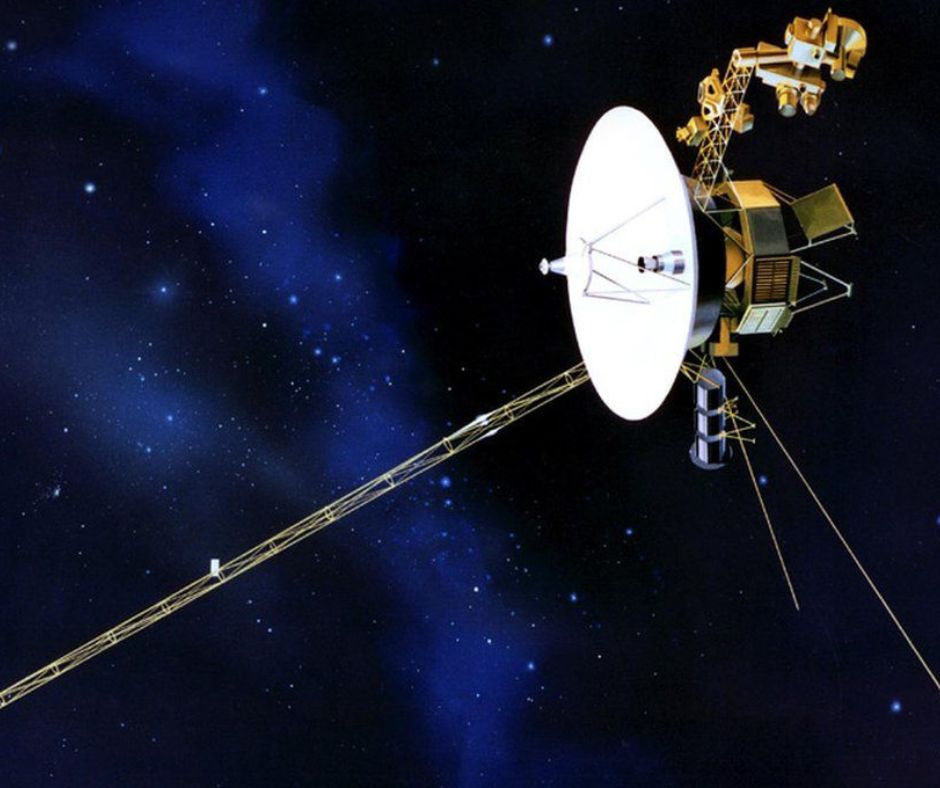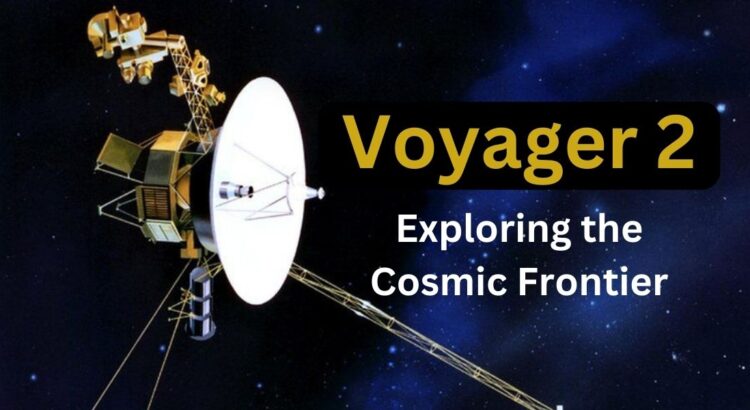Introduction
In the vastness of space, there exists a remarkable ambassador of human exploration known as Voyager 2. Launched by NASA on August 20, 1977, Voyager 2 is a robotic spacecraft that has surpassed all expectations, venturing far beyond the boundaries of our solar system. As we embark on a journey through its historic mission, we’ll discover the wonders of Voyager 2 and its unparalleled contributions to our understanding of the cosmos.
Table of Contents
Voyager 2 Latest News – Lost Contact with Earth
Voyager 2, a spacecraft exploring deep space beyond our Solar System in July 2023, has lost contact with Earth for more than a week. This happened because of a small mistake in a command that made its antenna point away from us.
Even though the antenna only shifted 2%, Voyager 2 is currently over 1219 billion kilometers away from Earth, so the impact of this error is significant. The team at NASA, who control the spacecraft, sent the command to maintain its operations, but it ended up causing the communication blackout.
NASA’s Deep Space Network, a system of giant antennas that communicate with far-off space missions, is now trying hard to reconnect with Voyager 2. But because of the vast distance, any signal from the spacecraft takes over 18 hours to reach us.
The team will send the right command to Voyager 2’s estimated location soon, hoping to restore communication. But it’s not an easy task, as it’s like searching for a needle in a cosmic haystack. If this attempt doesn’t work, NASA will have to wait until October when an automatic reset in Voyager 2’s systems might fix the problem.
During this time without contact, the spacecraft will continue its journey through space without guidance or monitoring.
Voyager 2 Mission and Objectives
The Voyager 2 mission was designed to study the outer planets of our solar system and transmit valuable data back to Earth. Its primary objectives were to explore Jupiter, Saturn, Uranus, and Neptune, as well as their moons and rings. Each planetary encounter provided a unique opportunity to unravel the mysteries of these distant worlds.
Voyager 2 Launch and Spacecraft Details
Voyager 2 was launched from Cape Canaveral, Florida, aboard a Titan IIIE/Centaur rocket. It was part of the ambitious Voyager program, which included a twin spacecraft, Voyager 1. Voyager 2 was equipped with a wide array of instruments, including cameras, spectrometers, and magnetometers, to conduct comprehensive scientific investigations.

Journey Through the Solar System
4.1. Flyby of Jupiter
Voyager 2’s first destination was Jupiter, the largest planet in our solar system. The spacecraft made a close approach to the gas giant in July 1979, capturing stunning images of its turbulent atmosphere, intricate cloud bands, and iconic Great Red Spot. The mission provided insights into Jupiter’s complex weather patterns and magnetic fields.
4.2. Encounters with Saturn and Uranus
After its successful mission at Jupiter, Voyager 2 continued its voyage to Saturn. The spacecraft’s arrival at Saturn in August 1981 revealed breathtaking images of its magnificent rings and many moons. The gravitational assist from Saturn then propelled Voyager 2 towards Uranus, where it arrived in January 1986, uncovering details about the planet’s atmosphere and moons.
4.3. Diving into the Outer Solar System
Voyager 2’s final planetary encounter was with Neptune in August 1989. The spacecraft’s flyby of the ice giant provided invaluable data about Neptune’s atmosphere, rings, and enigmatic moon, Triton. This marked the first and only time a spacecraft has visited this distant planet.
Voyager 2’s Contribution to Science
5.1. Discoveries and Observations
Throughout its journey, Voyager 2 made numerous groundbreaking discoveries that reshaped our understanding of the solar system. It revealed active volcanoes on Jupiter’s moon Io, complex ring structures around Saturn, and intriguing magnetic anomalies on Uranus and Neptune.
5.2. Spacecraft’s Current Status
Despite being more than four decades old, Voyager 2 continues to send valuable data back to Earth. It has now entered interstellar space, becoming the second human-made object to achieve this milestone. The spacecraft’s longevity and functionality have exceeded all expectations, and it continues to be an essential asset for scientific research.
The Golden Record: A Message to the Universe
One of the most fascinating aspects of the Voyager 2 mission was the inclusion of the Golden Record. This unique record carries sounds and images from Earth, intended to represent humanity to potential extraterrestrial civilizations. It serves as a time capsule, encapsulating the diversity and essence of our planet.
Voyager 2 and Interstellar Space
Voyager 2’s entry into interstellar space opened up new opportunities for scientific exploration. Beyond the influence of our sun, the spacecraft provides crucial data about cosmic rays and magnetic fields, enriching our knowledge of the vast interstellar medium.
The Legacy of Voyager 2
Voyager 2’s legacy goes beyond its scientific achievements. It has become a symbol of human ingenuity, curiosity, and the relentless pursuit of knowledge. The mission continues to inspire current and future generations of scientists, engineers, and space enthusiasts alike.
Voyager 2’s Impact on Future Space Exploration
The success of the Voyager 2 mission has paved the way for more ambitious space exploration endeavors. Its accomplishments have taught us valuable lessons about spacecraft design, mission planning, and the importance of interplanetary exploration.
Conclusion
Voyager 2 remains an iconic feat of human space exploration. Its incredible journey has unveiled the wonders of our solar system and left an indelible mark on our quest to understand the universe. As Voyager 2 ventures into the cosmos, we are reminded of our boundless potential to explore and discover the mysteries that await us beyond the stars.
FAQs
Is Voyager 2 still operational?
Yes, despite its age, Voyager 2 is still operational and continues to send valuable data back to Earth.
What was the purpose of the Golden Record on Voyager 2?
The Golden Record on Voyager 2 carries sounds and images from Earth, intended to represent humanity to potential extraterrestrial civilizations.
Which planets did Voyager 2 explore?
Voyager 2 explored Jupiter, Saturn, Uranus, and Neptune.
What is the current location of Voyager 2?
Voyager 2 has now entered interstellar space, beyond the influence of our sun.
How has Voyager 2 impacted future space exploration?
Voyager 2’s success has inspired and informed future space missions, contributing to advancements in spacecraft design and mission planning.
You may also like
संगणकाच्या पिढ्या संपूर्ण माहिती | 6 GENERATION OF COMPUTER IN MARATHI FULL INFORMATION





[…] Also Read VOYAGER 2: EXPLORING THE SUPER COSMIC FRONTIER […]